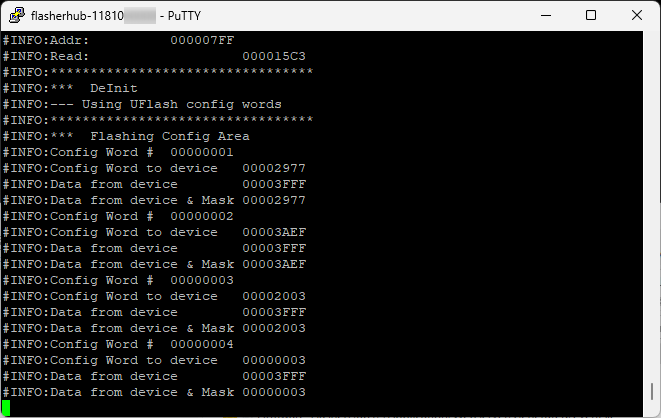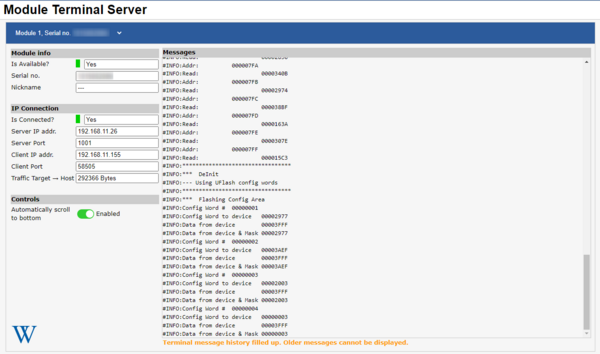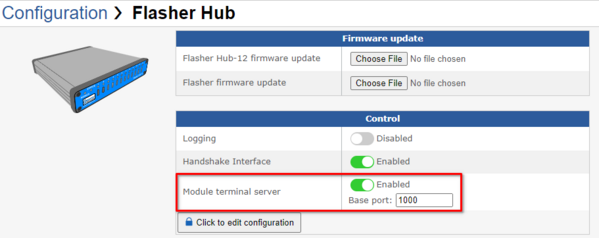Flasher Hub - Status port
Flasher modules may output informative messages on their terminal during operations like erasing, programming or verifying.
Such messages are output for U-Flash projects that are configured for "verbose output".
In order to receive terminal messages from a Flasher module that is connected to Flasher Hub, the status port can be used.
When enabled, the status port (formerly "Module terminal server") reads terminal messages from all connected modules.
The output can be inspected in the web interface "Terminal" page.
Additionally, the terminal output for a module can be received by a TCP/IP connection.
Contents
Configuration
The status port can be configured as follows using the web server page "Configuration > Flasher Hub".
The feature can be enabled or disabled. Furthermore, the base port for accepting TCP/IP connections can be set.
Connection
For each module, a TCP/IP connection can be opened to receive the modules' terminal messages. The port number for each module is calculated using the module position and the configured status port base port:
BasePort + ModulePosition = ModuleTerminalPort
For a base port of 1000, the following module terminal ports result:
| Module position | Port |
|---|---|
| 1 | 1001 |
| 2 | 1002 |
| 3 | 1003 |
| 4 | 1004 |
| 5 | 1005 |
| [...] |
A TCP/IP client receives a modules' terminal messages by connecting to Flasher Hub's IP address and the desired port number.
The connection details are shown on the web server "Terminal" page:
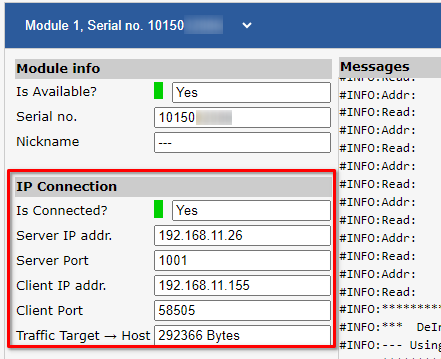
An example configuration to connect to the terminal of module #1 using PuTTY looks as follows:
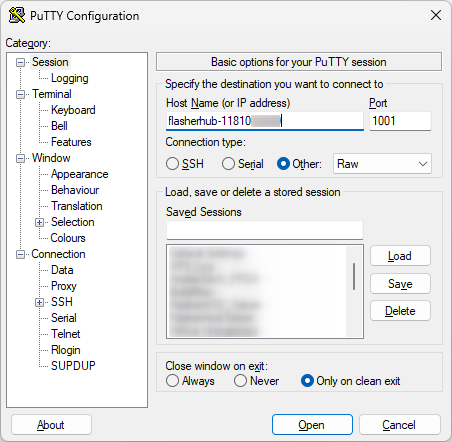
The terminal messages are sent as raw TCP/IP data.
A client utility may need to be configured accordingly.
After opening the connection and triggering an operation on the module, the connection receives terminal messages:
